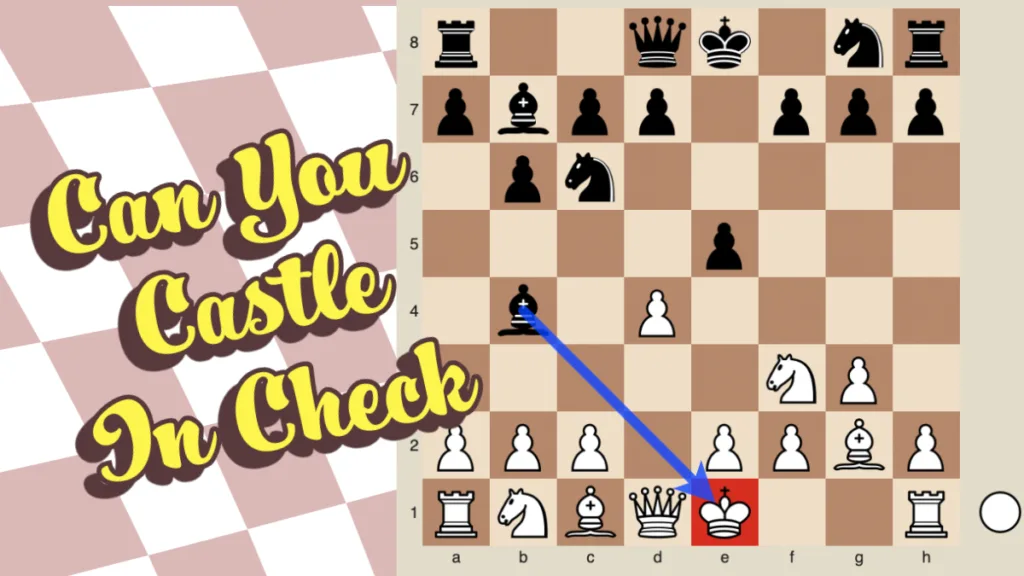Short Answer: No, you cannot castle while your king is in check.
Let’s break that down and cover the other castling rules you need to know to avoid common mistakes.
What Is Castling in Chess?
Castling is the only move in chess where two pieces, the king and a rook, move at the same time. It’s a special defensive maneuver designed to:
- Protect your king by tucking it safely away to the corner.
- Activate your rook, bringing it closer to the center of action.
How Does Castling Work?
You move your king two squares toward a rook, then hop the rook over the king to the square right next to it.
There are two types:
- Kingside castling (0-0) – Short castling
- Queenside castling (0-0-0) – Long castling
The 4 Golden Rules of Castling
Castling is only legal if all four of these conditions are met:
- Your king hasn’t moved earlier in the game.
- The rook you’re castling with hasn’t moved either.
- No pieces are between the king and the rook.
- Your king is not in check, and doesn’t move through or land on a square that is attacked.
Let’s highlight the key point here:
❌ You cannot castle when in check.
❌ You also cannot castle through or into check.
But…
✅ You can castle even if the rook is attacked or moves through a threatened square.
The rule only applies to the king, not the rook.
Common Misconceptions About Castling
❓ Can you castle out of check?
No. If your king is in check, you must get out of check before castling.
❓ Can you castle through check?
No again. The king cannot pass through any square that is under attack.
❓ Can you castle if only the rook has moved before?
Also no. If either the king or the rook has moved, even just once, castling is no longer an option for that pair.
When Should You Castle?
Castling is a strategic decision. Here’s when it makes sense:
✅ Early in the game, usually after developing your knights and bishops.
✅ When your king is in the center and the board is open, vulnerable to attack.
✅ To connect your rooks, improving your coordination.
✅ When you’re ready to launch an attack and want your king out of the way.
But don’t castle blindly. Watch for:
- Castling into a storm (opposite-side attacks).
- Delaying too long and getting stuck in the center.
- Leaving your rook cut off if you castle too early.
Pro Tip: Kingside vs Queenside Castling
- Kingside (0-0): Safer, requires fewer pieces to move.
- Queenside (0-0-0): More aggressive, but leaves the king slightly more exposed.
Choose based on your position, plan, and opponent’s threats.
Next time you’re unsure, just remember: The king gets special treatment. If he’s in danger, castling is off the table.
I’m the senior editor of Attacking Chess, a keen chess player, rated above 2300 in chess.com. You can challenge me or asking questions at Chess.com.


1 thought on “Can You Castle When in Check? A Clear Guide to Chess’s Most Misunderstood Rule”
Comments are closed.